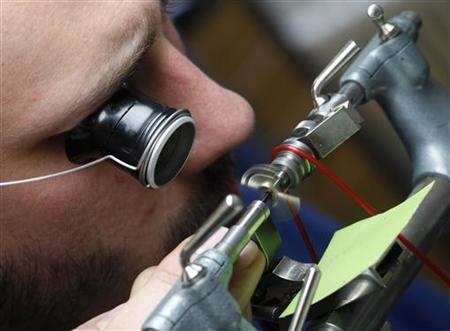
Geneva, September 6: Switzerland ranked as the world's most competitive economy for the fourth year running, while the United States continued a four-year slide down the table, the World Economic Forum (WEF) said in its annual survey on Wednesday.
The study by the WEF, best known for running the annual meeting of world business leaders at the ski resort of Davos, ranks 144 countries by examining 113 indicators culled from official data sources and a poll of 15,000 executives who opine on the country where they do business.
Switzerland pipped Singapore to the top spot thanks to strong scores in areas such as innovation, labour market efficiency and effective public institutions.
The United States fell from fifth spot to seventh because of political and economic problems that detracted from its status as a global powerhouse of innovation, the study said.
"We see this development as a result of the growing macroeconomic imbalances in the country but also due to the political deadlock that has been augmenting the problem of macroeconomic imbalances," said Margareta Drzeniek, a senior economist at the Geneva-based organisation.
"There does seem to be an inability to take decisions on the political side."
Rather than a big shake-up in the rankings, the 2012 survey found deepening divides, she said.
"One of the reasons those persistent divides are not being closed - and the prime example here is Europe, or the United States as well - is because of the political deadlock that we've observed, that has prevented those countries from taking a longer term approach to improving competitiveness with a view to stabilising growth in the future."
"This political deadlock is jeopardising the future prosperity of those countries because it may lead to a reduction of productivity and a loss of competitiveness and reduced growth in the future."
The lowest ranked EU country was Greece, at 96th. But it was rock bottom - 144th out of 144 - for its macroeconomic environment.
Qatar moved up three places to 11th but may need to reduce its vulnerability to commodity price fluctuations if it is going to break into a top 10 dominated by northern European countries, the report said.
Four of the five BRICS nations fell in the rankings, with only Brazil climbing, up five places from last year to 48th.
China still led the group. Its 29th place ranking was down from 26th in 2011 but still 30 places ahead of India, which has lost 10 places since peaking at 49 in 2009.
"(China's) various barriers to entry appear to be more prevalent and more important than in previous years," the report said. It added that China benefits from a macroeconomic situation ranked 11th globally, despite a prolonged episode of high inflation.
Russia was 67th, down one place from 2011, with a sharp improvement in the macroeconomic environment offset by weak public institutions, which were ranked 11th worst.
On several scores Russia was ranked among the 10 lowest achievers globally, including its low rates of technological adoption, lack of trust in its financial system, weak level of competition and inefficient markets for goods.





Comments
Add new comment